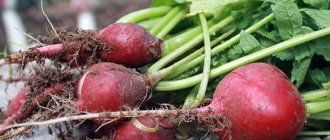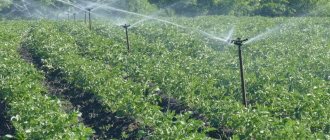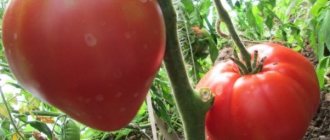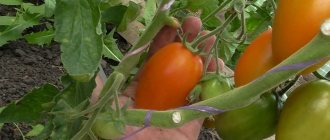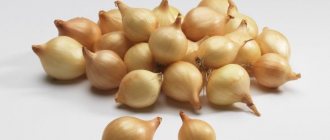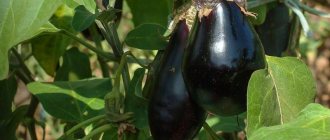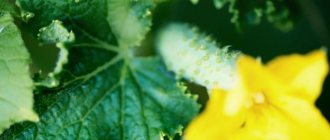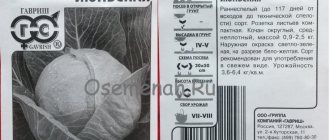The Celeste radish was developed by the Dutch corporation EnzaZaden, which has existed since 1938 and is engaged in crossing different varieties of vegetables and seed production. This variety is cultivated in many countries, as it is easy to grow, and the radish itself contains a large amount of vitamins and minerals.
Radish Celeste
Celeste radishes have a slightly spicy taste
Celeste radish tops are tasty and healthy
Description
Celeste is an early-ripening, very plastic hybrid. It appeals to both gardeners and farms.
Appearance and taste
Celeste has the following external characteristics:
- shape – regular round;
- fruit color – rich pink-scarlet, smooth surface;
- tops – low-growing;
- leaves – bright green, low;
- the size of root crops when fully ripe is 4-5 cm in diameter;
- weight of an average fruit – 25-35 g;
- pulp – dense, white, tender;
- the taste is pleasant, slightly bitter, slightly spicy.
Advantages and disadvantages
The variety has a number of advantages , which makes it quite popular:
- grows both in open ground and in greenhouses;
- fruit ripening occurs simultaneously;
- high level of fruit germination;
- able to quickly adapt to changing conditions;
- does not form arrows and peduncles;
- good taste;
- decent appearance;
- does not need long daylight hours;
- has a short growing season - the harvest can be harvested after 3 weeks;
- can be stored for a long time and remain in good condition;
- safely endures transportation;
- not susceptible to peronosporosis.
disadvantages :
- radishes do not develop well if the soil is heavy, saline and acidic;
- needs frequent watering, but does not like waterlogging;
- demanding on soil fertility;
- development strongly depends on what the land was previously planted with.
Areas of application
The variety is recommended to be consumed fresh - it is added to salads, appetizers and cold soups, and the tender tops are used as greens, since its taste is not bitter.
Celeste is often chosen for the preparation of medicinal compositions in folk medicine and homemade cosmetics.
Description of radish "Celeste" F1
Radish "Celeste" F1 is very popular among both farmers and amateur gardeners. To confirm this, you can find numerous positive reviews about this hybrid. According to the manufacturer's description, the ripening period from germination to harvest is 20 - 25 days, that is, the variety is early and early ripening. Also, the Celeste variety is characterized as one of the most delicious radish hybrids. Weight can reach 30 grams.
Radishes are red in color and round in shape. The pulp is tender, juicy, tastes slightly spicy, even sweetish.
Planting the Celeste variety
Despite its unpretentiousness, there are a number of requirements and features for growing Celeste.
Selection and preparation of a site
The plant loves natural light, so choose an area that is well lit. Do not forget about the rules of crop rotation (more details below), and also do not plant radishes for several years in a row in the same place, as the soil needs to recover and rest.
The soil for planting should be loose, not acidic, with a pH of 6, preferably sandy loam. Carefully check the composition of the soil - if it is poor or heavy, add river sand to loosen it. If the acidity level is too high, carry out a liming procedure.
After you have completed these preparatory measures, dig up the entire area, apply mineral fertilizers if necessary, and at the end level the planting site and leave for a while to allow the soil to warm up.
Crop rotation rules
To obtain a large harvest and to avoid a deficiency of nutrients, follow the rules of crop rotation. Radishes should not be planted in areas where the following cruciferous crops previously grew:
- mustard;
- cabbage;
- swede;
- rape.
After such predecessors, Celeste will not be able to develop normally. The soil on which tomatoes, cucumbers and sweet peppers previously grew is suitable for planting.
Preparation of seed material
If you buy the seeds ready-made, in factory packaging, then you can simply sow them into the soil. If the seeds are untreated, they are prepared and disinfected. The most popular processing method is soaking in hot water or potassium permanganate. The procedure looks like this:
- put the seeds in a gauze bag and place them in a container with hot water for 15-20 minutes or soak the seeds in a pink manganese solution for 15-20 minutes;
- dry the seeds and sow.
To make the seeds grow faster, they are kept for a day or two in a damp cloth in a warm place. For successful germination, soaking in solutions of stimulants is also practiced (the procedure must be followed according to the instructions for the drug).
Deadlines
If you use a greenhouse or greenhouse for cultivation, planting can be done all year round, but the most suitable period for this is March-April.
Celeste seeds germinate at soil temperatures of about +5 degrees. The tops can withstand short-term frosts down to -3-5 degrees, but it is better to provide the radish with the opportunity to develop at temperatures favorable to it - not lower than +15 degrees.
Root crops ripen in 25-35 days, but these periods may shift depending on the time of planting and growing conditions. Seeds sown in early February ripen in about a month and a half, in March - in a month, and if planting took place in April, then the ripening period is 21-25 days.
If radishes are grown for winter or autumn consumption, keep in mind that from September to January, root crops do not grow as quickly as in spring - the ripening period can take up to 2 months. And the actual planting is carried out every 14 days.
Scheme
Radishes are sown according to this scheme:
- in the prepared area, form grooves up to 2 cm deep, the distance between them should be at least 15 cm;
- moisten the wells with warm water;
- take the seed material, place it in the grooves, at a distance of 4 cm from each other;
- Cover the holes with soil without compacting them.
If the soil is heavy, then the seeds are planted at a minimum depth - no more than 1 cm. After the planting work has been carried out, it is advisable to cover the area with film or agrofibre. The cover can only be removed while the area is being irrigated, and completely removed a few days after the sprouts have formed.
Collection of root vegetables
We recommend reading our other articles
- When do pullets start laying eggs and how many eggs?
- Tomato variety Hali-Gali F1
- Tomato variety Babushkino
- Sheep farming as a business
Collection of radish Celeste F1
The main positive quality of the Celeste F1 variety is its short ripening period. Thanks to this, it is possible to plant radishes 2 or even 3 times in a row. In 25 days it grows completely and then the next batch is immediately sown in the same place.
It is very easy to understand that radishes are ready for harvesting. When turning away the leaves, you need to look at the ground; if the radish is peeking out of the ground, and it is clear that the root crop has developed sufficiently and looks out of the ground well, then you can collect it and eat it or send it for sale. Celeste F1 radishes are sold in bunches or by weight. Depending on the method, after harvesting you need to completely cut off the tops or wash the root vegetables along with the greens.
Variety care
To get the maximum yield, you need special care for the beds. Let's consider the necessary actions.
Watering
When watering radishes, make sure that the water does not stagnate, otherwise the root crops will begin to rot. Shallow irrigation can harm the crop, as it causes the formation of soil crust and the growth of weeds.
Irrigation in 2-3 approaches allows water to penetrate deep into the soil. To do this, you can use a watering can with a fine sieve. The optimal method of watering is sprinkling on the foliage. Use warm, settled water.
Feeding
To feed radishes, fertilize the soil well with mineral and organic fertilizers. This should be done both before planting and as the radishes grow:
- At the planting stage, add 10 g of urea, 40 g of double superphosphate, 1 glass of wood ash and 5 kg of compost or humus per 1 sq.m. Dig the bed to a depth of about 20 cm, mix fertilizers and work the soil with a rake.
- At the growth stage , add phosphorus-potassium fertilizers, sulfur (dilute 20 g of potassium sulfide, superphosphate and 1 glass of ash per 10 liters of warm water). Also, radishes may need nitrogen fertilizers (if the leaves of the bushes grow too pale) - add 1 tsp per 10 liters of water. urea.
Soil care
In the first weeks after planting, carry out the procedure of loosening the seedlings. Do it carefully, loosen to a depth of 2-3 cm, gradually deepening to 5-6 cm to ensure better penetration of air and nutrients to the roots of the plants.
Try to carry out a similar procedure after each watering or rain.
Advantages and disadvantages of the variety
Also check out these articles
- Pear variety In memory of Yakovlev
- Canned fish in an autoclave
- Compound feed for laying hens
- What to feed Vietnamese piglets
To better understand the qualities of a hybrid, let's consider its advantages and disadvantages. You need to start with the positive aspects.
Benefits of radish Celeste F1
- The yield of Celeste F1 radish is up to 3.5 kg per square.
- Stress resistance. With temperature fluctuations and humidity changes, the sprouts continue to develop at the same pace.
- This hybrid does not release an arrow.
- Root crops are resistant to cracking, so the harvested crop has excellent commercial qualities.
Important!
To get the maximum yield of Celeste F1 radish, you need to grow it in greenhouses and not in open ground.
- Radishes can be transported over long distances; they do not spoil on the road.
- Excellent taste.
- The hybrid is easy to care for.
- Ripening is smooth, so you can harvest the entire crop at once, rather than waiting until the rest of the root crops ripen to occupy the area with new crops.
Gardeners either remain silent about the shortcomings, or the hybrid simply does not have them. There are only nuances typical for all types of radishes that have to be taken into account when growing.
- Planting can only be done in loose soil.
- Excessive watering harms radishes, but if there is a lack of moisture, the root crop will be small.
- It is very difficult to grow in summer, especially in the second half of summer, when it is very hot, since this crop requires coolness to grow.
Features of cultivation
Let's consider the features of growing the Celeste variety in open ground and in a greenhouse.
In the open ground
Radish is an unpretentious and cold-resistant crop, but despite this, you need to take into account some features of growing in open ground. There are 2 factors that affect yield - humidity and temperature. If they are fully satisfied, you will be able to get a bountiful harvest.
If the soil dries out, this will negatively affect the quality of the root crops, the growth of the radish will slow down, and if it is over-moistened, the fruits may crack. As for the temperature, the optimal values are +15-18 degrees - the root vegetables will grow to a normal size and with the appropriate taste characteristics.
In the greenhouse
You need to plant radishes in a greenhouse in the same way as in open ground - the soil and seeds are prepared according to the same scheme, but there are several nuances:
- in greenhouses there is not enough natural light, so lamps must be installed and the radishes must have 12 hours of daylight;
- in greenhouses you can regulate the temperature, so radishes can be planted at any time of the year;
- Make sure that the temperature is between +18-20 degrees, as the variety does not like hot weather;
- the greenhouse must be ventilated at least twice a day, since fresh air is of great importance for the crop;
- radishes are planted in a greenhouse in ordinary greenhouse soil - high-quality, fertilized, with low acidity.
Pests and diseases
Celeste can independently resist many diseases and pests, but sometimes she is too actively affected by such problems. Radishes of this variety are most often attacked by two types of parasites:
| Pest | Symptoms | Struggle |
| Cruciferous flea beetle. | These are small black beetles that can turn radish leaves almost into a sieve in a very short time. Female flea beetles lay eggs on the leaves, and the hatched larvae eat the roots of the plants. | Mix wood ash and tobacco dust in a 1:1 ratio and spray the plant every week from the moment the leaves appear. You can also use an infusion of ash (250 g per 8 liters of water). |
| Aphid. | A small insect of greenish-yellow, black and brown colors. It feeds on plant sap, attacking it in entire colonies. Because of this, the affected areas become discolored and look like small beige dots. The leaves become deformed, turn yellow and dry out. | Radishes are sprayed with foam of laundry, green potassium or tar soap, and after half an hour they are washed with clean water. In case of mass damage, you can use general insecticides - Tanrek, Admiral, etc. (instructions for use on the package.) |
And the diseases are the following:
| Disease | Symptoms | Struggle |
| Kila. | A disease that radishes can get if they grow in lowlands where water accumulates or if they were planted in acidic soil. Root crops become covered with rounded or elongated growths, and crop growth stops. The roots turn brown and rot. | Treat the bed with lime milk (dilute 2 tablespoons of lime in 10 liters of water). To avoid disease, 3 days before sowing, pour ash into the soil at the rate of 100 g per 1 sq.m and loosen it. |
| Mosaic. | A viral disease due to which radish exhibits growth inhibition, mosaic, leaf deformation and mild vein necrosis. | Modern means are powerless against mosaic. The only way to get rid of it is to collect all the affected plants and burn them. |
| Downy mildew. | At the base of the rosette of leaves and on their parts located in the ground, dark spots with blurry, indistinct edges appear. Over time, the spots merge and cover the entire root crop, causing it to crack and harden. | To prevent disease during the growing season, spray radishes twice with boric acid diluted in water (10-15 g per 10 l) or Rizoplan. |
| Gray rot. | Develops due to high humidity. Brown spots appear on root vegetables, which are covered with a fluffy coating with small black inclusions. The tissues soften and rot, the leaves lose their tone. | Radishes can be sprayed with a solution of mustard powder or iodine (50 g or 10 drops per 10 liters of water). |
Preventive measures against diseases and pests are as follows:
- Agrotechnical:
- carrying out thinning and removal of weeds, preventing overgrowing of beds;
- observe the watering regime;
- before sowing the crop, lime the bed;
- do not leave straw, weeds and manure near the beds;
- Carry out regular inspections of your radishes.
- Folk:
- periodically sprinkle the bed with wood ash or tobacco dust;
- dissolve a piece of laundry soap in a bucket of water and spray the plant once a week.
Possible problems
While growing Celeste, they encounter the following problems:
- Root vegetables are small, rough and fibrous. This is due to late sowing, when the temperature rose above +22 degrees. Because of this, the radish develops worse. The cause may also be a lack of moisture in the first 2 weeks of root crop growth.
- The radishes turned out bitter - the rules of agricultural technology were not followed (there was no watering, the soil was not fertilized).
- Celeste began shooting. This means that at the time the growth began, the temperature regime was violated - the temperature was either below +10 degrees or above +25. Another reason is that the seeds are sown too densely.
- The root crops are hard and dense - a crust has formed on the bed after rain or irregular watering.
How to harvest and store crops?
The yield of Celeste radish ranges from 1.5 to 2 kg per 1 sq. m. If all conditions have been met, then harvesting begins 24 days after sowing. To obtain a harvest of higher quality and greater visual appeal, the period is extended to 30 days. After this period, Celeste radishes will weigh up to 30 g each root crop.
The variety tolerates transportation well over long distances and after 3-4 days its appearance does not change at all. It is better to transport along with the tops to preserve the freshness of radishes for a longer period.
Harvest and storage
This vegetable will ripen in no time. You shouldn't rush him. There is no need to harvest ahead of schedule. But there is no need to allow the fruits to overripe. When the root crops reach medium size, then you need to harvest. Be sure to trim all ripe root vegetables. That is, cutting off the tops 2-3 cm from the radishes and trimming the roots.
How to store?
In the vegetable section of the refrigerator. You need to pre-pack it in a plastic bag. The only condition is that you need to make a hole in the bag for ventilation or open the bag slightly. Root vegetables can be stored at appropriate temperature and humidity for about 2 months . But you can't store them for too long. In this case they will lose their taste.
Reviews from gardeners
★★★★★
Lyudmila Petrovna, 52 years old, Omsk. This season I decided to plant radishes of the Celeste variety, as they are considered easy to care for.
We harvested an excellent harvest and did not encounter any pest problems. Overall I was pleased with my choice. ★★★★★
Igor Konstantinovich, 47 years old, Vladivostok. I am just gaining experience, and therefore for my garden I choose simpler varieties of vegetables that do not require careful care.
That's how I came across Celeste - a seed seller recommended this variety and told me how to care for it. We weren’t able to harvest as much as possible, but even what we got turned out to be very tasty, and everyone liked it. Hide
Add your review
By providing the Celeste variety with proper care, you can get an excellent harvest of tasty, bright root vegetables - juicy radishes will be a good addition to summer soups and vitamin-rich salads, which are so beneficial for the body.
0
0
Copy link

